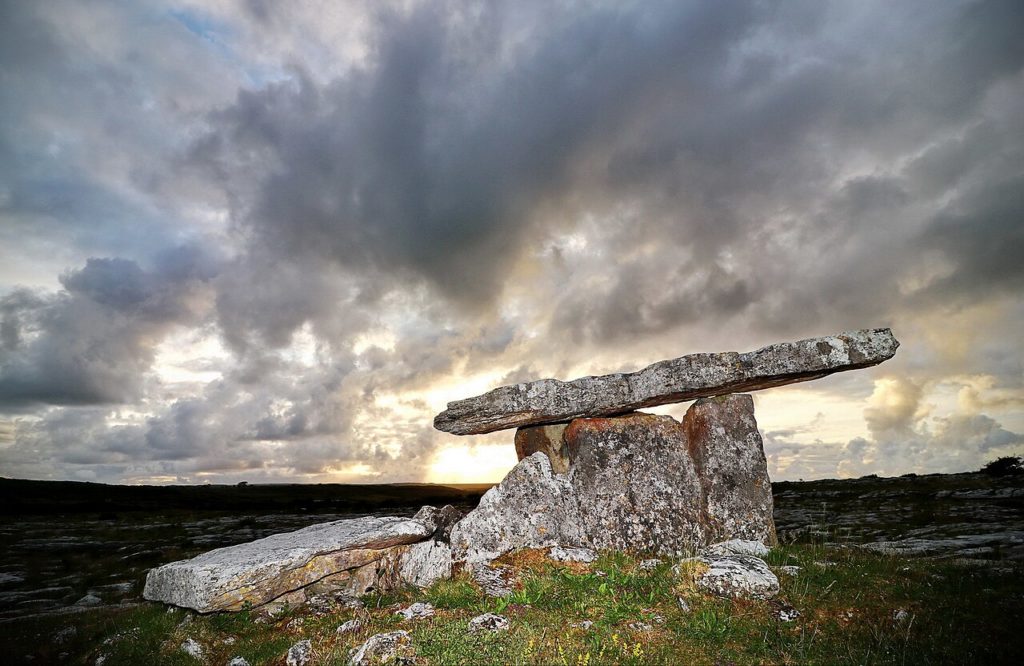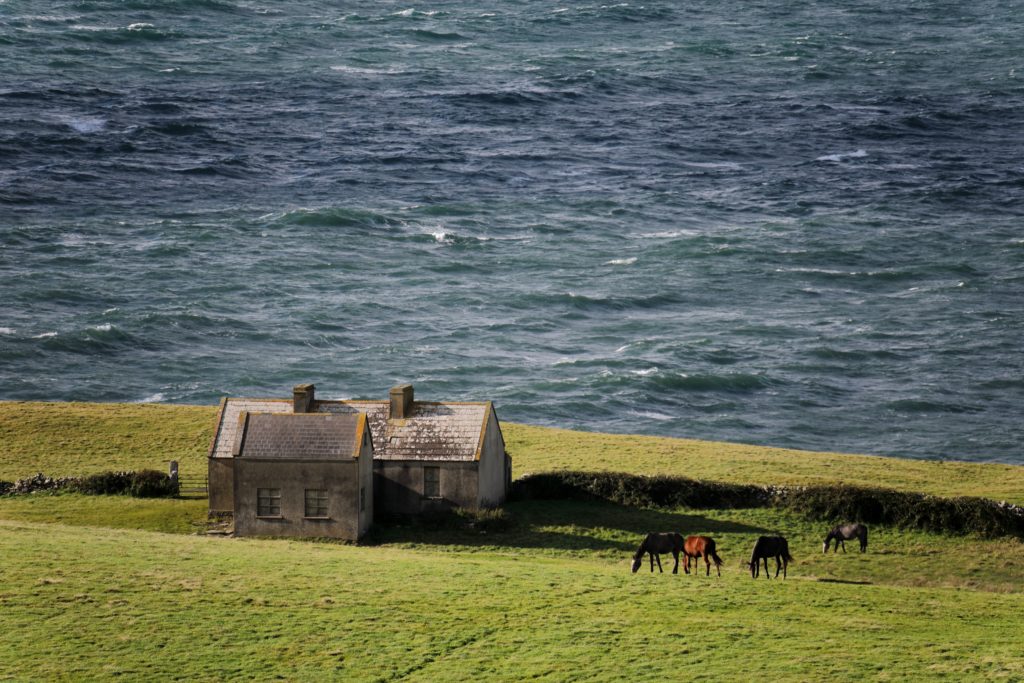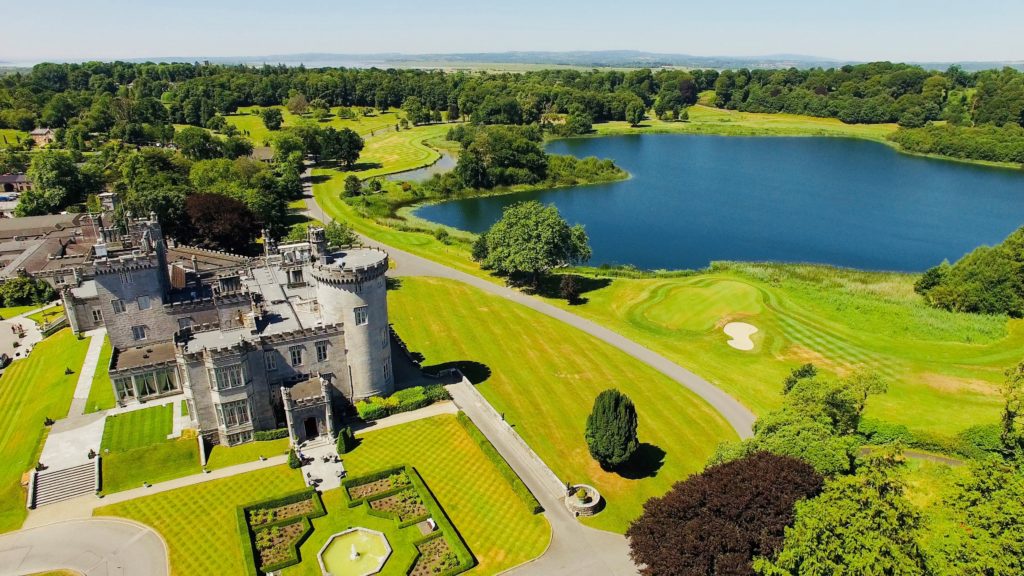TRAVEL articles rarely start with details of a new bus service, but Clare is different.
The westerly county could justifiably claim to be Ireland’s top destination — it has some of the finest traditional music anywhere, from intimate sessions in cosy pubs to the Willie Clancy School in Milltown (sometimes Miltown) Malbay which attracts musicians from around the world; it’s home to two of Europe’s most startling landscapes, the Burren and the Cliffs of Moher; and even underground there’s something going on, with a collection of stalagmites and stalactites at the Ailwee Cave and Doolin Cave.
Now, a new hop-on, hop-off shuttle bus service connecting towns, villages and top visitor attractions across north and west Clare has been launched.
The free Burren and Cliffs Explorer is a joint initiative by Clare County Council and the National Parks and Wildlife Service (NPWS) — find out all about it on www.cliffsofmoher.ie/burren-and-cliffs-of-moher-explorer
By the way, Clare Council, you really need a zippier name — what about Moher the Merrier?
Or maybe Edge of Europe Express, perhaps the Cliff Hanger Flyer. Or just the Burren Bus. Anyway I’ll leave that with you.
 Explore Poulnabrone in the Burren (PIC:MP Whyte on Wikimedia)
Explore Poulnabrone in the Burren (PIC:MP Whyte on Wikimedia)What to do in Clare
Give it large at a seisún
As Christy Moore sang: if it’s music you want, sure go to Clare.
A lot of Irish traditional music has been shaped by the Clare style. Clare fiddling is one of the most influential and widely respected regional styles, known for its lyrical, often slower and more expressive phrasing, which has infused much of traditional music.
The county is home to Martin Hayes and Sharon Shannon, as well as legendary groups such as the Kilfenora Céilí Band, the Tulla Céilí Band, Stockton's Wing. Ennis is the birthplace of Grammy-nominated singer Maura O'Connell — whose grandmother started a fish market in the town, Fact Fans.
Most towns and villages have at the very least one pub where a good seisún can be enjoyed — Doolin is top of the trad tree, with Gus O’Connor’s one of the main venues. The 160-year-old pub has nightly sessions — and also serves local mussels in garlic with home-baked crusty bread. Could you ask for more? Traditional music and a good scoff of seafood.
One particular favourite of my own is in Ennis — the Poet’s Corner in The Old Ground Hotel in Ennis. The music goes on till carouse o’clock, with a hugely eclectic range of musicians.
Clare is also the ideal place to learn an instrument or hone your traditional music skills. The Willie Clancy Summer School, set up in Miltown Malbay in 1973 on the death of one of Ireland’s greatest uilleann pipers, attracts musicians and singers from all over the world. The sessions, concerts, workshops, discussions and impromptu singalongs are probably unparalleled anywhere.
This year the school runs from Saturday, July 5 to Sunday July 13, 2025.
Classes will take place from Monday to Saturday and cover a range of instruments: uilleann pipes, whistle, flute, fiddle, concertina, button accordion, banjo, harmonica and harp. There are also singing workshops and classes in set dancing, step dancing and sean-nós dancing.
In the lectures, of particular note is ‘Tommy McCarthy and the London Connections: A Celebration of Traditional Music and Musicians in the City, 1950s–1980s’ (July 8, 3pm) will feature contributions from the McCarthy family and friends.”
Francis McPeake IV will give an illustrated talk titled ‘The Four Francis McPeakes and A Century of Irish Traditional Music’ on July 12 (2.30pm).
The McPeakes kept traditional music alive across the 20th century, and one of the Francis-es wrote Wild Mountain Thyme. www.scoilsamhraidhwillieclancy.com
Follow your literary muse
 Edna O'Brien was born in Co. Clare
Edna O'Brien was born in Co. ClareAs well as being trad music central, Clare has a long literary tradition, ranging from Edna O’Brien to Biddy Early.
Josephine Edna O’Brien was born in Tuamgraney in the east of the county. In her early 20s she qualified as a pharmacist in Dublin — she is, it can be fairly said, one of the few people who went from drugs to writing, and not the other way round.
The reputation of Feakle is founded on traditional music — but also for being the birthplace of Biddy Early, the wise woman or witch about whom Lady Gregory collected her Visions and Beliefs of the West of Ireland; and for being where the poet Brian Merriman taught as a schoolmaster, and is now buried.
Wander through the county capital
A walk through Ennis will take you to the Franciscan Friary. Occupying a tranquil spot by the River Fergus, this is just the sort of peaceful place to recuperate from the previous evening's revelries. Through the haze, pay particular attention to the McMahon Royal Tomb, fashioned from carved slabs of stone in the 15th century —said to be the finest of its kind in Ireland.
Further up the town you'll come to the De Valera Museum, a beautifully converted Presbyterian church. Dev, as you will not need reminding, was TD for the area for many years.
Other highlights to look out for include Steele’s Rock in the River Fergus — a lion-shaped carving commemorating ‘Honest Tom’ Steele, a close ally of Daniel O’Connell — and the monument to O’Connell himself, whose election to parliament earned Clare its nickname, the ‘Banner County’, a reference to the banners O’Connell supporters carried.
Clare’s finest rock group
 The Burren in Co. Clare (Pic: AirSwing Media)
The Burren in Co. Clare (Pic: AirSwing Media)The Burren is, quite simply, unique. A harsh, strange, hauntingly beautiful region, it occupies most of the top north western corner of Clare.
Spectral limestone pavements loom out of the turf, criss-crossed by deep trenches called grykes. In spring and summer these are filled with wild flowers, sphagnum moss and piles of heather; in winter the wind keens across this landscape like some wailing banshee. It’s the kind of landscape where you could believe all sorts of demonic carry-ons could happen.
The Burren is internationally important for its botany – with 75 per cent of the native species occurring here. You’ll find great stone tombs nearly 4000 years old, cooking stones going back two thousand years, churches a thousand years old, and mass stones going back to the penal times.
The ultimate in cliff hangers
The Cliffs of Moher are where Europe comes to an abrupt end. Here, on Ireland’s pugnacious westerly shoreline, the Great Wall of Thomond plunges some 700 feet into the Atlantic Ocean in dramatic style.
Star of selfies, Instagram, postcards, adverts, Irish Tourist Board videos and countless films, the Cliff of Moher are one of the most operatic views in all of Europe. Go on a Tuesday afternoon in November, long after the coaches have gone, and stand and wonder. The view here is unsurpassable — stand on your tiptoes by the observation post known as O’Brien’s Tower and you’ll swear you can just see New York. Huge towering cliffs, plumes of spray from the ocean, and thousands of seabirds will keep you mesmerised for hours.
The new visitor centre attracted much controversy at the outset, but it seems to me relatively unobtrusive and more or less empathetic with the surroundings. And the first-floor restaurant with its panoramic views and informative displays plus relatively cheap, hearty fare (sandwiches, soups etc) is certainly a welcome addition.
 The Clare coastline from the Cliff Walk (image Tourism Ireland)
The Clare coastline from the Cliff Walk (image Tourism Ireland)Have a banquet in a castle
One of Ireland’s top visitor attractions, Bunratty Castle and Folk Park – Bunratty is one of the finest authentic mediaeval castles in the country.
Built in 1425, it was faithfully restored in 1954, its furnishings and tapestries which capture the mood and style of the times. The banquets are still going strong after more than 70 syears.
Be prepared to join in and sing along with When Irish Eyes Are Smiling, and enjoy some first-rate entertainment — the musicians, singers and dancers who make up the Bunratty ensemble are as good as you’ll get anywhere; you’ll be treated to plenty of grade A traditional music.
There is, of course, plenty of paddywhackeray, but the food is good, and the craic is ninety, with occasional gusts up to 110.
The surrounding Folk Park, occupying some 26 acres, gives a glimpse of life in Ireland during former centuries. Reconstructed farmhouses, cottages and shops make up a living museum: animals are tended, bread is baked, milk is churned and roofs are thatched.
Where to stay
I WAS able to sympathise with the piano player at the Grand Hotel Excelsior Vittoria in Sorrento last summer. She was on the day’s first rendition of Come Back To Sorrento — probably the first of many renditions of the song she would play that day.
She was a very attractive lady, but looked as if she might have had a rough night. When the refrain came round — the bit that goes “Come back again. . .”, she managed to play it with just her left hand and stretched out with her other hand for a carton of orange juice. She chugged down a refreshing half pint or so, before launching into the second verse.
Black coffee too, whenever she had the chance.
I sympathised, because in my gigging days way back in the last century, I used to do a pub gig with a band on a Sunday starting at midday. Coffee and orange juice. That’s what you needed.
But let me be clear: the Vittoria’s pianist knew her way round the keyboard. And even if she was playing on automatic pilot, the notes from the grand piano resounded through the great Terrazza Bosquet restaurant.
A few hotels in Ireland offer piano playing at breakfast time, but a harp in the evening is slightly more common — my favourite would probably be the harpist who regularly fetches up at Ghan House in Carlingford, Co. Louth. The O’Carolan melodies are perfect for this old Georgian manor, now an ace hotel.
Clare, being an epicentre of traditional music does feature music in some of its hostelries, with Dromoland Castle regularly including a harp player in its dining room.
 Dromoland Castle
Dromoland CastleDromoland Castle, Newmarket-on-Fergus, Co. Clare
If walls could talk, Dromoland Castle would probably be chuntering away non-stop.
Because these walls have seen saints, scholars, barons, and even the Beatles come and go. Just seven miles from Shannon Airport, this 16th-century stunner was once home to the O’Briens—direct descendants of High King Brian Ború.
These days, it’s a five-star playground where you can live out your most regal daydreams. Eat and sleep like royalty — even though its 16th century royalty
It ticks all the castle boxes: turret suites, ancestral portraits, suits of armour, and the mellifluous sound of harp melodies drifting from the Earl of Thomond dining room.
Outside, there are 410 acres to explore: rowboats on the lake, bikes for a spin, an 18-hole golf course, even archery and clay pigeon shooting. Inside, the rooms are done up in soft creams and pastels with plush sofas and giant bathtubs built for lounging.
The Old Ground Hotel, O’Connell Street, Ennis
The Old Ground is a modernised and extended, ivy-clad 18th-century manor house turned 4-star hotel.
One of its wings, the Banner Room, was formerly the town hall, while another, the Lemenegh Hall, was formerly the town jail. When Shannon airport first opened, transatlantic crews based themselves in the Old Ground.
https://www.oldgroundhotelennis.com/
The Temple Gate Hotel, The Square, Ennis
www.templegatehotel.com.
In the centre of Ennis, the Temple Gate stands on the site of a 19th century Convent of Mercy with a fascinating and eventful history.
Prior to its conversion to a convent, the original houses, Row House and Lifford House, were the property of Charles O'Connell, cousin of Daniel O'Connell.
Daniel was a frequent visitor to the area particularly in the years 1827-1829 when planning his election campaign. The Sisters of Mercy moved from the Ennis Convent in 1995 to new premises nearby.
Moy House, Lahinch
www.moyhouse.com.
Looking directly out to the Atlantic, Moy House, a country house hotel, stands on 15 acres of its own ground – including an organic vegetable garden and orchard.
When the menus stipulate ‘local produce’, local means a few yards away.
Inside, the ten rooms are all individually and furnished; dinner is served in a room overlooking the sea; a spiral staircase leads up to a tower if you want a quiet space.
Also a good place to contemplate one of the great architectural conundrums — how do you describe a spiral staircase without using your hand?
For more information click here.

